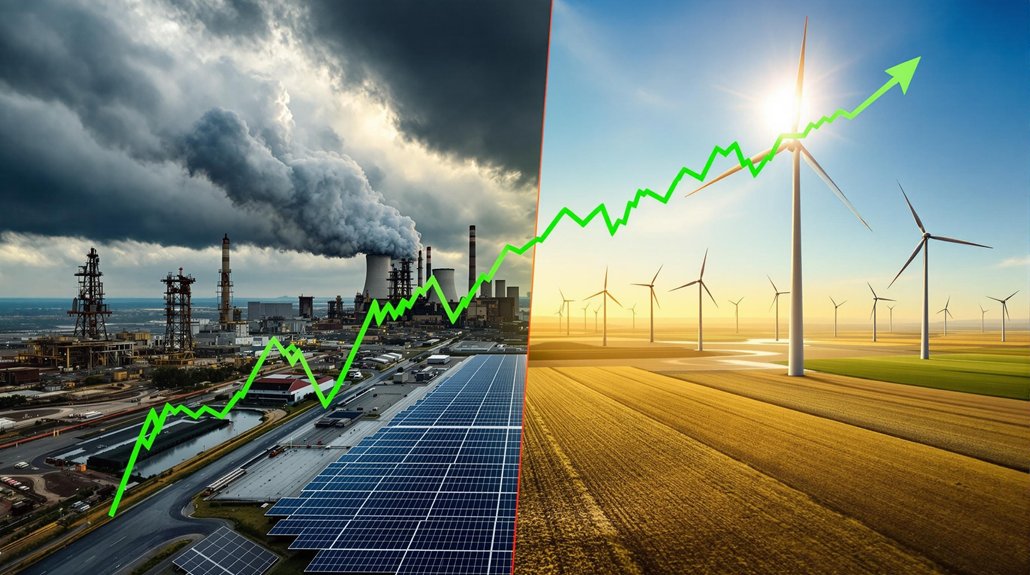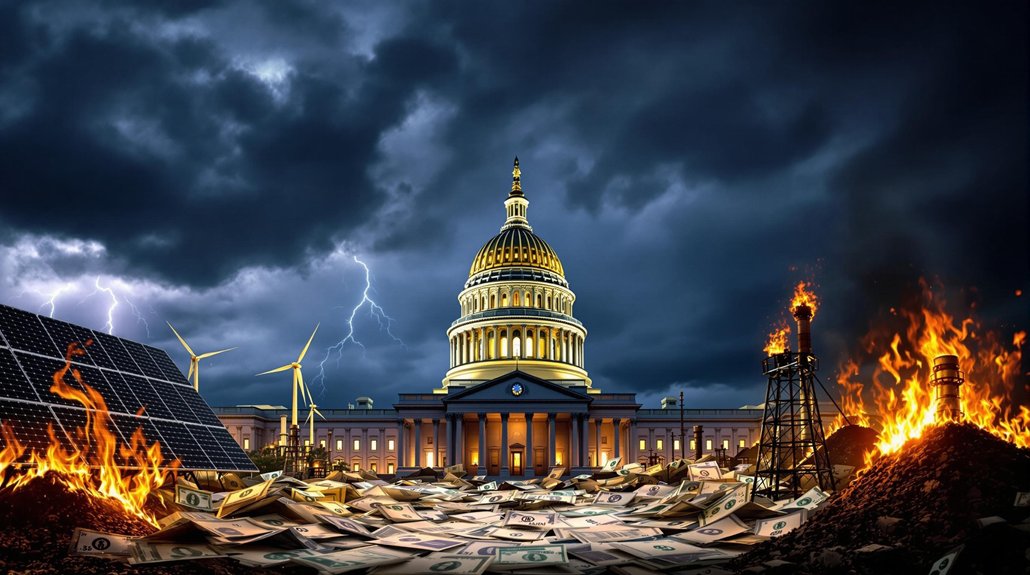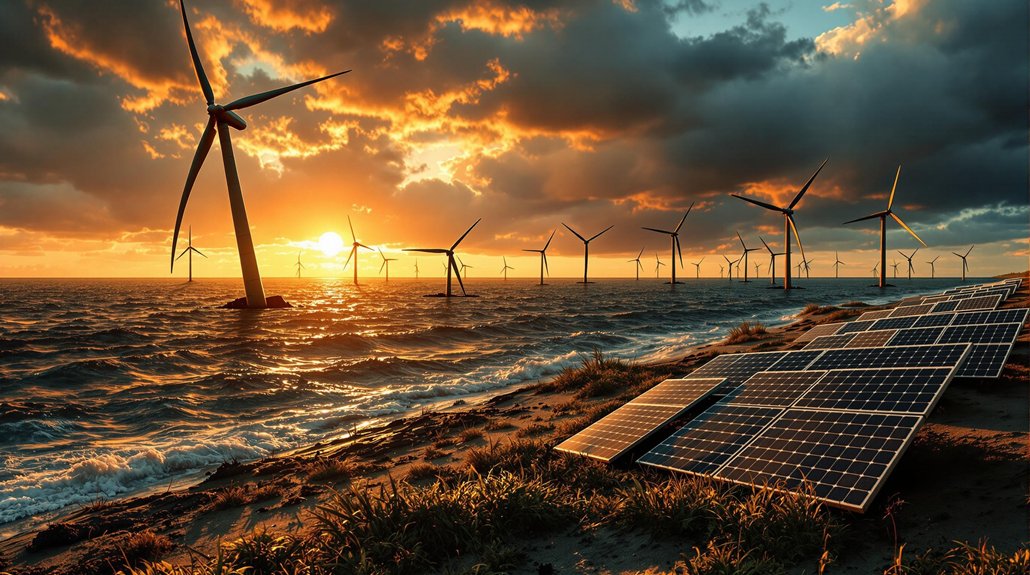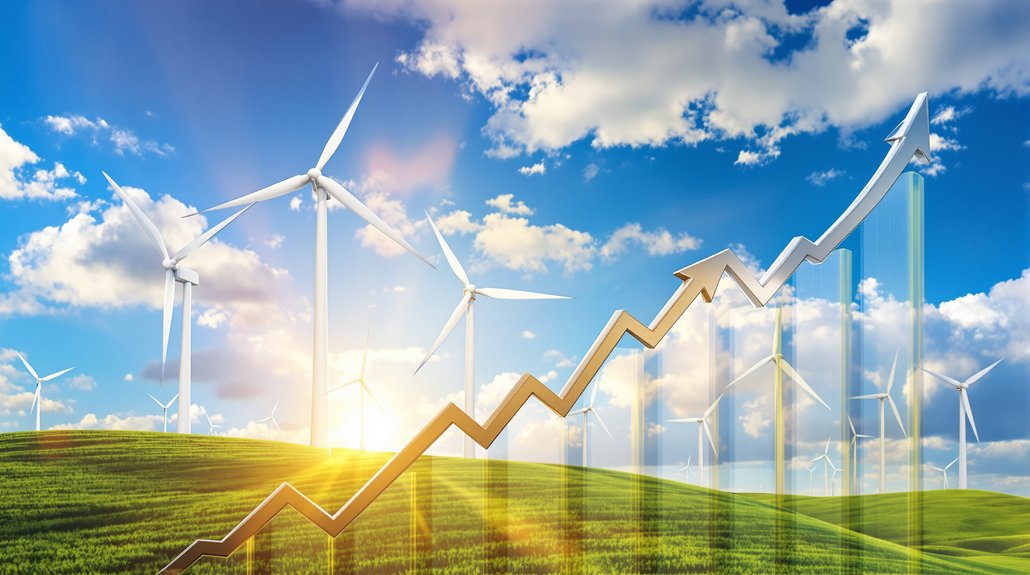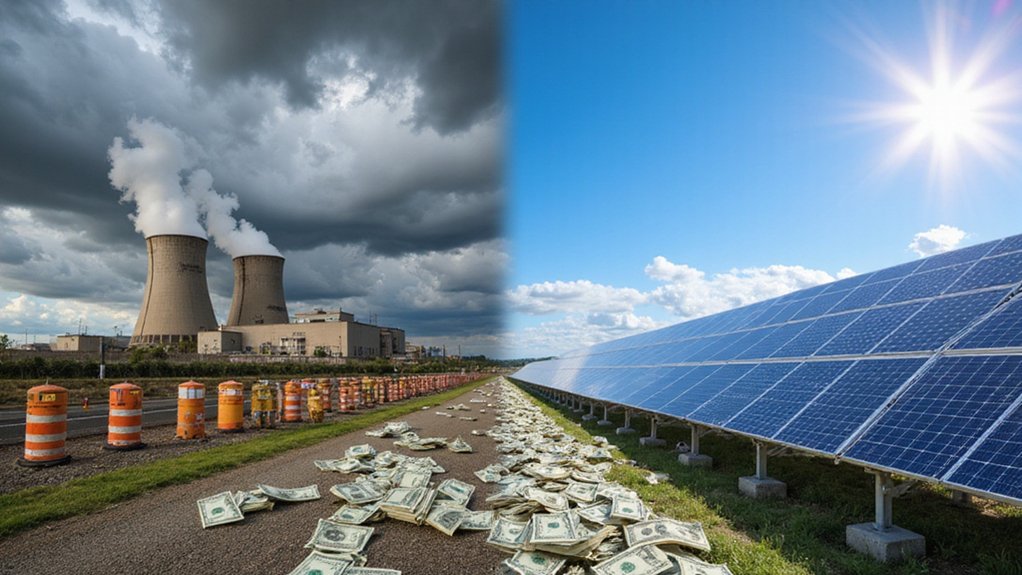Five renewable energy stocks show strong potential amid fossil fuel decline. NextEra Energy and First Solar lead in solar power, while Vestas Wind Systems dominates wind turbines. These companies benefit from the sector outperforming S&P 500 by 78% and global investments reaching $500 billion in 2024. With renewable capacity expected to grow by 2,400 GW by 2030 and government support through policies like the Inflation Reduction Act, these green giants stand at the forefront of energy’s future.
A surge of investor interest has propelled green energy stocks to remarkable heights over the past year. The green energy sector outperformed the S&P 500 by 78% in 2024, with renewable energy stocks seeing average gains of 45%. Solar stocks have been particularly strong, rising 130% year-over-year as of March 2025.
Leading companies like NextEra Energy continue to dominate wind and solar power generation. First Solar has expanded its manufacturing capacity as demand for solar panels grows worldwide. Vestas Wind Systems, the world’s largest wind turbine maker, saw its stock climb amid a 65% growth in wind energy stocks over the past 12 months. This green transition stands in contrast to traditional energy stocks that have been collectively down 1.4% in the last month. Projections suggest that fossil fuels like oil will be depleted by 2052, making renewable energy investments increasingly essential.
Industry giants NextEra, First Solar, and Vestas lead the green revolution, riding a powerful 65% surge in wind energy stocks.
Global renewable energy investments reached $500 billion in 2024. Investment trends show ESG funds received record inflows of $152 billion last year. About 75% of institutional investors plan to increase their green energy allocations, while retail investor participation in clean energy ETFs has tripled since 2023. Global electricity generation from renewable sources currently stands at 30%, with projections estimating an increase to 46% by 2030.
Government support remains strong with policies like the US Inflation Reduction Act providing $369 billion for clean energy initiatives. The EU Green Deal targets a 55% emissions reduction by 2030, while China aims for 1,200 GW of wind and solar capacity by the same year.
Technological advances continue to drive the industry forward. Commercial solar panel efficiency now reaches 24.5%, while battery storage costs have dropped below $100/kWh in 2024. Green hydrogen production costs fell 40% since 2023.
Growth projections remain robust. The global renewable capacity is expected to grow by 2,400 GW between 2025-2030. The energy storage market should grow at 20% annually through 2030.
Despite challenges like supply chain disruptions and raw material price volatility, the outlook remains positive. Grid integration issues and potential policy changes present risks, but the sector’s momentum appears strong as fossil fuel alternatives face increasing economic and environmental pressure.
